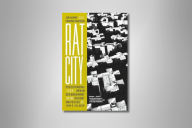You have /5 articles left.
Sign up for a free account or log in.

Andrew_Rybalko/iStock/Getty Images Plus
Mitigating bias in hiring decisions is essential to distinguishing the people who are best suited to do the job from those best suited to get the job. How we in higher education approach and plan our selection decisions either elevates or constrains the influence of our biases.
Hiring decisions influenced by bias might result in selecting someone viewed as a natural leader and an excellent cultural fit, based on their impressive narratives and experiences. But on the job, they struggle with many practical aspects, their lack of experience becomes apparent and they have difficulty managing the role’s complexities. Other candidates interviewed would probably have been more competent though they had less interview presence.
In practice, we don’t adequately appreciate the link between our approach and bias frequency, nor do we enjoy a clear conception of how bias actually plays a role in our thinking. As a result, we fail to implement mitigation strategies.
In this article, I draw key inspiration from Daniel Kahneman’s Thinking, Fast and Slow, distilling bias into basic terms and bridging us to a set of selection practices and insights. As I explain, our path to success is to articulate a clear plan when deciding among job candidates that simplifies and clarifies the selection task and stimulates conscious, deliberate thought at critical stages of the evaluation and decision. This guidance better equips HR professionals, facilitators, committees, leaders and anyone else who seeks to better predict on-the-job performance from potential employees.
Task Complexity and the Origins of Bias
According to Kahneman, we arrive at all our decisions and judgments through the cooperation of two ways of thinking. The first is an unconscious, automatic way that is effortless, fast and associative. It’s how we think when we associate a person with a song or instinctively detect simple relations with others based on similarity, familiarity and comfort. The second is a conscious, deliberate manner of thinking that is effortful, slow and deductive, such as calculating 364 times 121 or planning an event. The entirety of our mental lives is born from this cooperation between the two modes of thinking.
Of consequence, we can only consciously process a limited amount of information at any one time, creating a bottleneck to be managed daily and in data-rich, complex tasks. As a result, in the normal course of our lives, our brains seek to preserve our limited and valuable conscious attention by relying on our fast, intuitive, automatic thinking as much as possible.
For example, when faced with a task triggering rapid, instinctive thoughts, we are prone to accept or be greatly influenced by them. And the fact is that our general acceptance of automatic thinking is by design and often serves us well. In many ordinary situations, acting in fractions of a second with no deliberation based on similarity, familiarity or comfort suffices.
Of great importance, however, is the fact that our fast, involuntary thinking cannot be turned off and is prone to systematic error. For example, when faced with a complex task or question, our involuntary automatic thinking answers a simpler related question instead. Kahneman sees such “substitution” as the foundation of our cognitive biases.
To illustrate, suppose I ask how happy you are with your life. In answering, you will be influenced by a question you were not asked: What is my mood right now? You automatically experience thoughts about your current emotions and feelings (joy, fear, sadness, guilt, anxiety, love and so forth), which will influence, weight and guide your answer. Consequently, you will give different answers at different times based on your mood, illustrating bias toward your current emotions.
Alternatively, if you are thoughtful about your life—what you seek, value and possess—your assessment will vary far less according to your mood. This simple example of our favoring automatic thinking over effortful thought underlies all other cognitive biases. The more intense an automatic thought or the more coherent the association or narrative, the more powerful the influence on our conclusions and actions.
Bias in Selection Decisions
All these points extend to the selection and hiring process. Suppose we are interviewing a candidate for our organization. We seek to answer a complex question: Can this person succeed in this role?
During the interview, however, our fast, involuntary thinking answers an easier question: How do I feel about this person? That leads us to prioritize and weight their likability—rooted in associations of similarity, familiarity and comfort—as important.
Moreover, we embody a special overconfidence when assessing others—believing ourselves to be talented judges of others—making us more trusting of our involuntary associations and far less likely to slow down and invest energy in the decision. In fact, the more easily we see a person as likable, the more important the consideration will appear—illustrating our susceptibility to weight our subjective preferences, leading to biased assessments.
However, when making decisions about hiring or other people-oriented tasks, our goals are far better served by minimizing the influences of our highly associative, biased thinking. What strategies, then, might we use to mitigate these influences?
Kahneman advises to slow down and use deliberate thought when entering a “cognitive minefield,” a setting where we are prone to err. In light of his counsel, we are faced with a crucial question in cognitive minefields such as candidate interviews: How do we systematically preserve our essential but limited conscious attention when faced with complex data sets—reaching several hundred data points over a single interview—and mitigate detrimental levels of overconfidence in our automatic thinking in the service of sound, bias-free assessments?
While we cannot outright eliminate associative thinking, we can hope to limit its influence through informed strategies. Here I offer a framework with connected practices that support and enhance the probability of unbiased people decisions. Through such practices, we can prioritize what is important: activities that lay the foundation for our conscious attention at key stages of the hiring process.
Articulating a Clear Plan
The lack of a defined plan during evaluations can open us to automatic thinking by lacking a point of conscious attention or focus for inbound data points. To counter this, crafting an objective view of what discrete and essential data to focus on becomes crucial. Clearly identifying and defining the key assessment areas helps us to clarify the cognitive load, making it easier to focus our conscious and deliberate energies. Specific tactics may include:
- Creating a fixed sequence of defined assessment areas—skills, traits, competencies and so on—and rating each candidate on a point scale. That encourages disciplined collection of objective information and disciplined scoring of traits. Rating candidates on a point scale requires deliberate thought and thus is an important nudge in mitigating biases.
- Encouraging holistic assessment through a candidate evaluation summary. Such a resource can serve to clarify the goals of each stage for each candidate, as noted in Korn Ferry’s Interviewing Right. For example, an applicant materials review, semifinalist interviews and the finalist round help combine ratings and elements holistically while mitigating the recency bias, or overweighting elements more recent in time. Areas to consider for such a summary might include the candidate’s experience and track record, job skills, competencies, potential and so forth.
Practicing Conscious Effort
To overcome biases and automatic thinking (or stand a chance of minimizing them), we must also approach interviews and decisions with conscious preparation and effort. Being aware of our natural tendency to make snap judgments based on association, we can produce more reliable assessments by slowing down the decision-making process and staying mindful throughout.
- Encourage assessors to reflect on the defined evaluation areas in advance. Forming a clear idea ahead of time about what they will be looking for in their rating assignments will support their thoughtful application of those ratings. Urge them to ask themselves what evidence a candidate could offer to be convinced they have demonstrated a trait successfully in their past. What experiences might shape the development of a trait? Again, forming such insights before an interview will help assess whether a given candidate has applied and developed a particular skill, trait or competency.
Also remind assessors to ask themselves questions before assigning ratings, such as, how does this person compare to colleagues on this particular criterion? How does this person compare to incumbents in the position and other relevant people? Such questions trigger deliberate, effortful thought.
- Support data-focused comparisons of candidates at each selection stage. Before meeting and discussing candidates, confidentially collect and aggregate data from the evaluations for the purposes of informed discussion, helping the group see any convergent or divergent assessments areas and enabling discussions that rely as little as possible on automatic thinking and bias. As Kahneman has noted, confidential aggregation makes the best use of each person’s judgment, expertise and knowledge.
I have facilitated many discussions where this practice enabled clear understanding of the group’s thinking from the outset and supported meaningful, criteria-focused discussions. For example, one hiring team that held more than 12 interviews found the resulting aggregate assessment data conveyed strong convergence around four candidates and then a significant drop-off. Other evaluations have illustrated areas of divergence or disagreement. In all such cases, the teams have benefited from data-grounded conversations that would not have otherwise had such clarity and context.
- Encourage assessors to come to group discussions with brief conclusion summaries for each candidate. Lacking such conclusions before an open discussion gives undue weight to the opinions expressed first—or loudest—potentially creating anchoring effects that lead to error. You may also want to briefly educate assessors beforehand on how to recognize and avoid automatic thinking. By helping them to identify such thinking in themselves and others, and to understand the importance of deliberate thought and discussion, you can help create a group dynamic friendly to open and fruitful dialogue.
In conclusion, how we think and judge both simplifies and complicates our lives in fascinating ways. On the one hand, our reliance on automatic thinking enables incredible efficiencies, and on the other, it opens the door to systematic error and bias. To truly move the needle and address the challenge of bias and error in our people decisions, our approach to data-gathering and the resultant decisions must help us invest our energies consciously and operate in more disciplined and thoughtful ways as a default.
As James Clear, author of Atomic Habits, has observed, we do not rise to the level of our goals; we fall to the level of our systems. A truer thing could not be said of our challenge as we seek to mitigate selection bias in hiring and attract and retain the best workforce possible for our higher education institutions.








